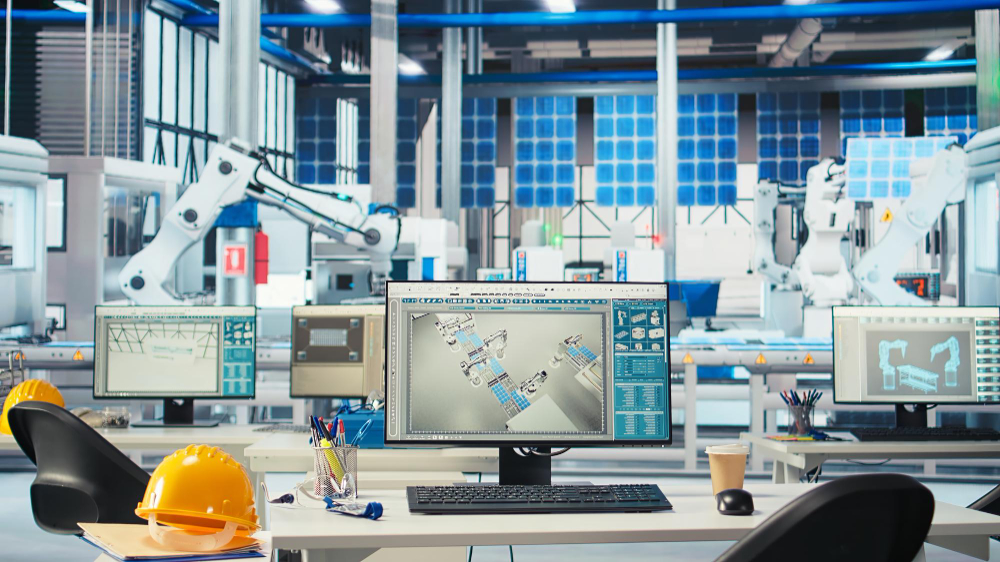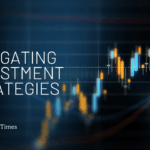In today’s fast-evolving world, innovation isn’t just an advantage — it’s the lifeblood of progress. Across every sector, technology has become the great disruptor, redefining how industries operate, how people connect, and how businesses grow. From artificial intelligence streamlining workflows to blockchain enhancing transparency, the digital revolution is not on the horizon — it’s already …
Innovation at Work: Transforming Industries Through Technology

In today’s fast-evolving world, innovation isn’t just an advantage — it’s the lifeblood of progress. Across every sector, technology has become the great disruptor, redefining how industries operate, how people connect, and how businesses grow. From artificial intelligence streamlining workflows to blockchain enhancing transparency, the digital revolution is not on the horizon — it’s already here.
Let’s take a closer look at how technology is transforming industries, reshaping business models, and empowering a new era of intelligent, efficient, and connected workplaces.
The Age of Digital Transformation
The 21st century has ushered in what many call the Fourth Industrial Revolution — a fusion of technologies that blur the lines between the physical, digital, and biological worlds. Businesses are no longer competing on size or resources alone; they’re competing on speed, agility, and innovation.
From AI-powered analytics predicting market trends to IoT devices connecting machinery on factory floors, technology has made operations smarter, decisions faster, and customer experiences more personalized. Digital transformation isn’t just a buzzword — it’s a strategy for survival.
According to global research, over 90% of executives believe that technology-driven innovation will be the defining factor in their company’s success over the next decade. The message is clear: adapt or get left behind.
Manufacturing: The Smart Factory Revolution
Once dominated by heavy machinery and manual labor, the manufacturing industry has become a breeding ground for digital innovation. Smart factories — powered by sensors, robotics, and real-time data — are changing the game.
Automation now allows for predictive maintenance, reducing costly downtimes. Robotics are handling repetitive tasks with precision, freeing up human workers for creative and strategic roles. Artificial intelligence is being used to optimize supply chains and forecast demand with remarkable accuracy.
What once took weeks to manufacture can now be produced in days. And with technologies like 3D printing, companies can prototype and produce components on demand — cutting waste and increasing efficiency.
This isn’t the manufacturing industry of the past; it’s an ecosystem of intelligent machines and human creativity working hand in hand.
Healthcare: From Treatment to Prediction
Perhaps no sector has witnessed such a dramatic transformation through technology as healthcare. The integration of AI, data analytics, and biotechnology is pushing boundaries that once seemed impossible.
Wearable devices now track vital signs and health metrics in real time, empowering patients to take charge of their well-being. AI algorithms can detect diseases such as cancer and diabetes earlier than traditional methods, while telemedicine platforms bring healthcare to remote and underserved communities.
Moreover, data-driven healthcare enables personalized treatment plans based on a patient’s genetic profile — a shift from reactive medicine to predictive and preventive care.
The COVID-19 pandemic accelerated these innovations, proving that digital health tools are not just convenient — they’re essential.
Finance: The Digital Money Revolution
The financial sector, once viewed as conservative and slow to change, has embraced innovation with open arms. Fintech — the marriage of finance and technology — has transformed the way we save, invest, and transact.
Blockchain has brought new levels of transparency and security to transactions, while cryptocurrencies challenge the traditional notions of money. Artificial intelligence and machine learning are reshaping risk assessment, fraud detection, and customer service.
Meanwhile, mobile banking and digital payment platforms have democratized access to financial services, allowing millions of unbanked individuals around the world to participate in the global economy.
The fintech revolution isn’t just about convenience; it’s about inclusion, efficiency, and the future of financial empowerment.
Retail: Personalization and the Power of Data
Walk into a store — or browse one online — and you’re stepping into a space shaped by data-driven innovation. Retailers are now using AI to analyze buying behavior, personalize recommendations, and predict what customers want before they even know it themselves.
Augmented reality (AR) tools allow shoppers to “try on” outfits or visualize furniture in their homes without stepping foot outside. E-commerce giants are experimenting with drone deliveries, while brick-and-mortar stores are evolving into experiential spaces blending digital and physical shopping.
This shift isn’t just redefining the retail experience — it’s reimagining consumer engagement altogether. The future of shopping is smart, seamless, and deeply personalized.
Education: The Rise of Smart Learning
The education sector has seen a quiet yet powerful revolution. Virtual classrooms, online courses, and AI-based learning platforms have made knowledge more accessible than ever before.
Students today can learn coding from Silicon Valley instructors or study history from Oxford professors — all from their living rooms. Artificial intelligence is also helping educators tailor lessons to individual learning styles, making education more inclusive and effective.
The rise of edtech has not only bridged geographical barriers but also prepared the next generation for a digital-first world — one that values adaptability, creativity, and continuous learning.
Transportation and Energy: Towards a Sustainable Future
Technology’s role in sustainability cannot be understated. Electric vehicles (EVs), autonomous driving systems, and smart city infrastructure are transforming how we move and use energy.
In the energy sector, the integration of renewable resources with smart grids allows for efficient distribution and reduced carbon emissions. AI-driven analytics help optimize energy consumption, while blockchain ensures transparency in carbon tracking and renewable energy credits.
The combination of clean energy and digital innovation signals a new era — one where growth and sustainability coexist.
The Human Factor: Innovation Starts with People
While technology often takes the spotlight, it’s crucial to remember that innovation begins with people. Machines can process data, but it’s human ingenuity that drives vision, creativity, and purpose.
Successful organizations cultivate cultures of innovation — where experimentation is encouraged, collaboration is valued, and learning never stops. The future of work depends not only on adopting new tools but also on fostering an environment where ideas can thrive.
After all, the most powerful innovation isn’t the technology itself — it’s how we use it to solve real-world problems.
Looking Ahead: A Connected Tomorrow
As industries continue to evolve, one truth stands out: technology is not replacing us; it’s redefining us. The lines between work, creativity, and innovation are blurring, creating opportunities for those bold enough to adapt.
From manufacturing floors to hospital corridors, from virtual classrooms to digital trading floors — technology has become the thread weaving industries together into a smarter, faster, and more connected world.
The question for businesses is no longer “Should we innovate?” but “How fast can we?” Because in today’s world, staying still is the quickest way to fall behind.
In essence, innovation at work is not about machines taking over — it’s about humans and technology working side by side to build a future that’s more efficient, inclusive, and limitless in potential.




